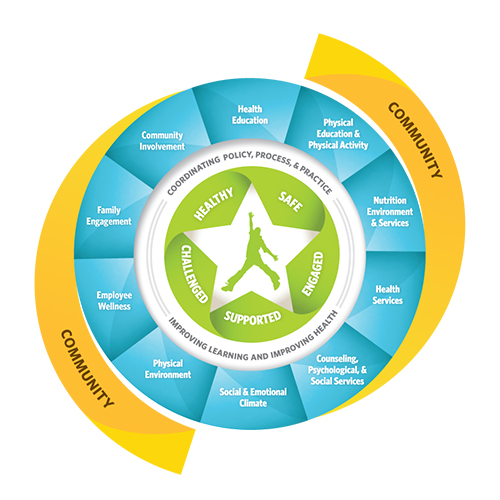
Addressed in this series of blogs are common misconceptions regarding physical education, physical activity, Coordinated School Health Programs, global best practices, nutrition and how best to navigate through the muddied waters of health information in general.
As Laozi said in the Tao te Ching, the journey of a thousand miles begins with the first step. But where do we begin when the collective consciousness of the entire global population is available at our fingertips on screens of every size and resolution? There may be no one-size-fits-all approach when it comes to the overall health regarding the human population let alone of regions and countries, individual states and even cities. In order to narrow the scope and focus of a wellness program it seems the best practice is to begin with individual communities and schools to find the most effective combination of physical, nutritional, emotional, mental and social education.
I hesitate to use a war analogy but everyday we are thrust headlong into conflict with the biggest battleground being our minds. Attention spans have dwindled due to a constant barrage of images and flashy lights, quick tips, fad diets, but more importantly a constant flow of information. Provocative headlines compete for our click-throughs, advertisers appeal to our basest instincts and sometimes the information we seek seemingly slips through our fingers.
This introductory blog focuses on Coordinated School Health Programs and how individual communities can come together to effect the change they desire. Like a bespoke suit, tailored to perfection, individual communities can best assess the health issues that plague them as well as utilize the research that's available to unleash their latent transformative potential.
The plethora of issues schools currently face, specifically defunding, is daunting. According to CDC, "health-related factors such as hunger, physical and emotional abuse, and chronic illness can lead to poor school performance.1 Health-risk behaviors such as early sexual initiation, violence, and physical inactivity are consistently linked to poor grades and test scores and lower educational attainment.2-4 In turn, academic success is an excellent indicator for the overall well-being of youth and a primary predictor and determinant of adult health outcomes.5-7 Leading national education organizations recognize the close relationship between health and education, as well as the need to foster health and well-being within the educational environment for all students."8-11 Additionally, "scientific reviews have documented that school health programs can have positive effects on educational outcomes, as well as health-risk behaviors and health outcomes.12-13 Similarly, programs that are primarily designed to improve academic performance are increasingly recognized as important public health interventions. Schools play a critical role in promoting the health and safety of young people and helping them establish lifelong healthy behaviors. Research also has shown that school health programs can reduce the prevalence of health risk behaviors among young people and have a positive effect on academic performance. CDC analyzes research findings to develop guidelines and strategies for schools to address health risk behaviors among students and creates tools to help schools implement these guidelines."
Furthermore, when addressing a collaborative approach to learning and health the CDC recommends, " to have the most positive impact on the health outcomes of young people, government agencies, community organizations, schools, and other community members must work together through a collaborative and comprehensive approach." The Whole School, Whole Community, Whole Child (WSCC) model expands on the eight elements of CDC’s coordinated school health ( CSH ) approach and is combined with the whole child framework. CDC and ASCD developed this expanded model—in collaboration with key leaders from the fields of health, public health, education, and school health—to strengthen a unified and collaborative approach designed to improve learning and health in our nation’s schools." The CDC's conclusions lend credence to the idea that it truly does, "take a village to raise a child."
With over 70 years in the education field, ASCD "is the global leader in developing and delivering innovative programs, products, and services that empower educators to support the success of each learner." http://www.ascd.org/about-ascd.aspx "The demands of the 21st century require a new approach to education to fully prepare students for college, career, and citizenship. Research, practice, and common sense confirm that a whole child approach to education will develop and prepare students for the challenges and opportunities of today and tomorrow by addressing students' comprehensive needs through the shared responsibility of students, families, schools, and communities." http://www.ascd.org/whole-child.aspx
The tenets of the whole child framework are:
Subsequent blogs will expound on the conclusions reached by reputable sources such as CDC and ASCD and other luminaries including but not limited to Dr. Pangrazi and Dr. MingKai Chin. Together, we'll explore the interrelationships between health, physical activity and America's stagnating academic performance compared to the rest of the developed world. http://www.theatlantic.com/education/archive/2013/12/american-schools-vs-the-world-expensive-unequal-bad-at-math/281983/
http://www.cdc.gov/HealthyYouth/health_and_academics/